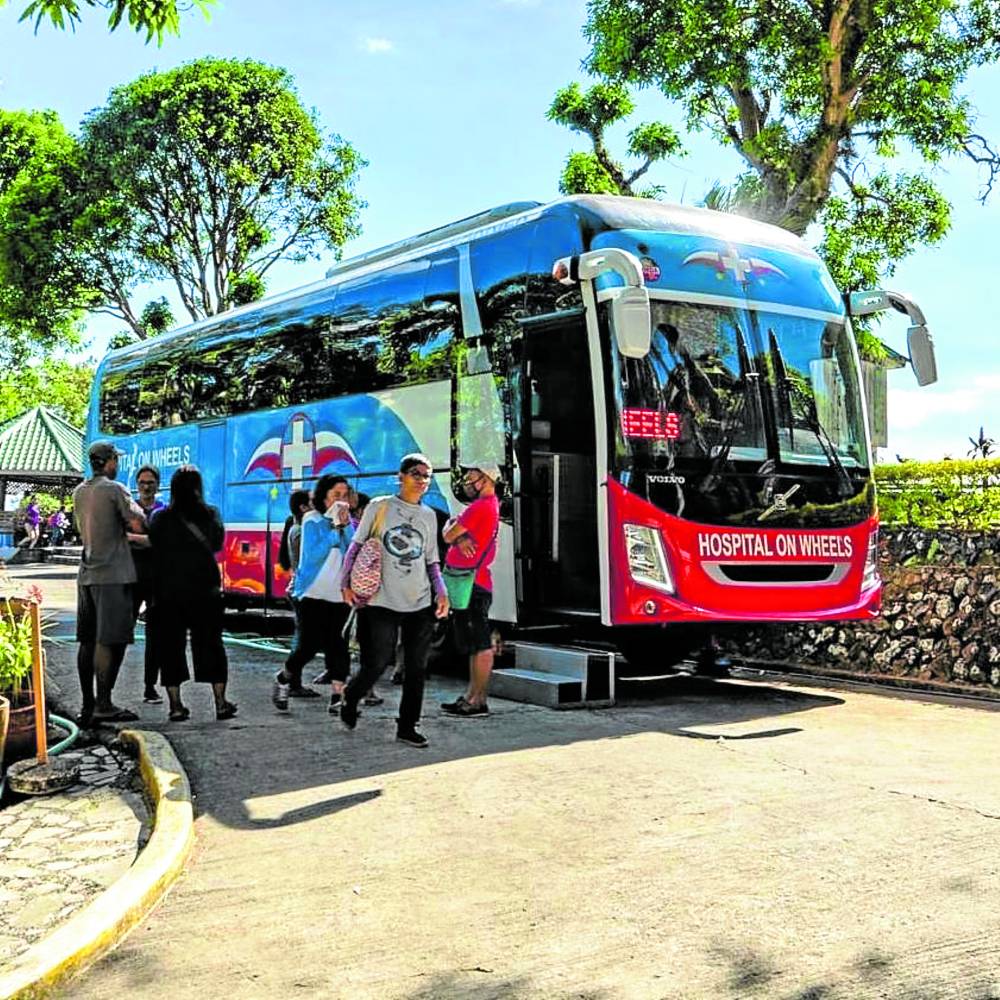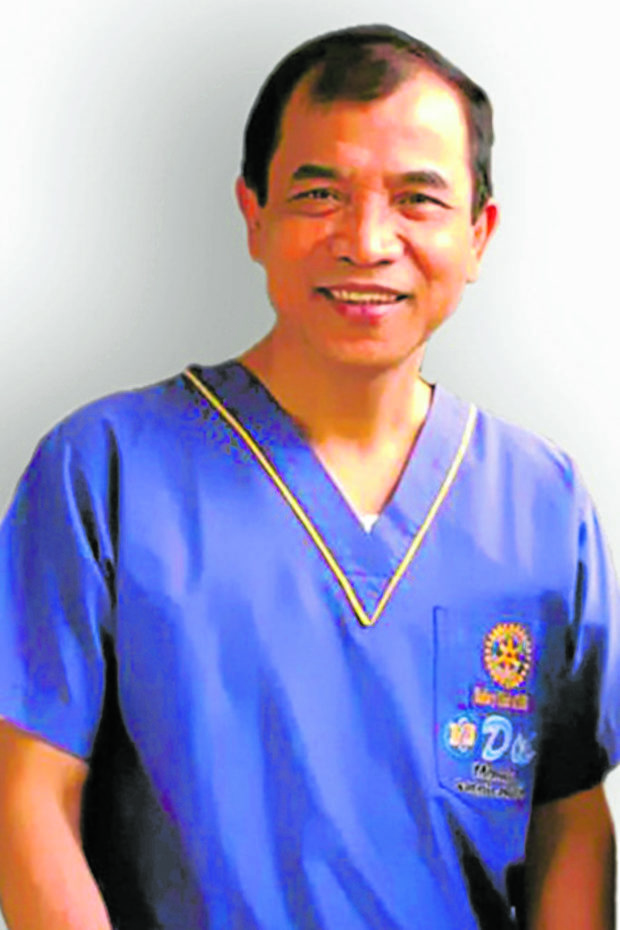
The European orientalist Francis Bacon wrote in one of his essays, “If the mountain cannot come to Mohammad, let Mohammad go to the mountain.”
Dr. Jim Sanchez, an innovative and well-respected Filipino surgeon, felt the burden in his heart on how he could help address the big number of Filipino indigent patients who need surgery but do not have access to a government hospital which could render services and surgical supplies for free. They don’t even have money for transportation to go to the hospital.
So, most of them are just resigned to accepting what they have as part of their lives forever—a cleft lip or palate, a progressively growing mass on their neck due to an enlarging goiter or abdominal hernias that bulge with the slightest movement.
An idea which was seemingly impossible at the start flashed in Dr. Sanchez’s mind. Why not bring the hospital to where these poor people are?
The Hospital on Wheels (HOW) project was born, wherein he envisioned a fleet of buses converted into modern operating rooms, going to remote areas in the country. He is known for his innovative surgical techniques and devices, and with his steadfast pursuit of his vision, things have slowly fallen into place and people who share his vision are helping subsidize their almost weekly medical-surgical missions. They have a fully functional bus, and hopefully, more Good Samaritans will be moved to complete the dream of an entire fleet of HOW.
There can be no denying that we still have huge gaps in health-care delivery in our country, especially when we talk of providing services to remote areas whose residents have rarely seen a doctor or even a nurse. This problem gets more complicated when we have major calamities like super typhoons and volcanic eruptions, which could render nonoperational the hospitals and other health-care facilities in the areas.
Filling in the gaps

Dr. Sanchez has been doing medical-surgical missions since 1985 in the conventional manner, but HOW is a thinking-out-of-the-box concept to help fill the gaps in providing our countrymen access to adequate health-care delivery.
The concept truly follows the Mohammad-mountain metaphor. Since people in need of medical or surgical assistance cannot come to urban areas where the big medical centers are, HOW provides a stop-gap measure to bring modern medical science to people who could benefit from them, particularly during critical times. And these critical times don’t come once in a blue moon. We have scores of typhoons hitting the Philippines every year, causing injuries and illnesses, especially infections.
“What we need right now is immediate response that can provide temporary health care in the area, and that can only be provided by a readily available health craft fleet that can immediately go anywhere. It doesn’t have to go to the area of the calamity; it can go as near to the area as possible,” explains Dr. Sanchez.
He and his team have helped provide life-changing surgeries to more than 15,000 indigent patients in the more than 30 years that they’ve conducted their free surgical missions.
Before they were able to complete their first HOW, they performed surgical missions with their “OR (operating room)-on-wheels”—a single, medically-equipped van, which regularly went to far-flung areas to provide free surgeries. It had two operating tables and six prefabricated folded operating tables that allowed doctors to perform eight surgeries simultaneously. The bus-hospital they now have has even more modern equipment and can allow simultaneous surgeries and medical consultations.
Countless grateful Filipinos with goiters, cleft lips, cleft palates, hernias and tumors, and those with injuries after a natural calamity that needed surgical repair, have benefited from the almost weekly surgical missions aboard the HOW. They are a testament to what could be achieved if this HOW could be expanded to an entire fleet, equipped with state-of-the-art medical facilities so they can do even emergency surgeries.
Natural calamities
The role of this mobile health-surgical care providers could be crucial during natural calamities. During the aftermath of Supertyphoon “Yolanda,” all hospitals, clinics and drugstores in Tacloban City and nearby areas were not able to function for several months. Even the health personnel like doctors, nurse, medical technologists and pharmacists were asked to evacuate for safety reasons. Only a handful remained, and they felt helpless due to lack of facilities and supplies.
The HOW could offer a solution when such a problem arises, as it likely would from time to time. This HOW is a mobile hospital that can be quickly deployed to serve as a makeshift medical facility.
Once the fleet is completed, with up to 10 air-conditioned buses and one support 40-foot container van, it will be fully equipped to function as a complete hospital. It will have provisions for water supply, gas, and electricity. Prefabricated tents will serve as the hospital wards, which will also have all the basic equipment and supplies to attend to the patients’ needs.
“It is like an aircraft carrier, but it’s a health craft carrier designed like a hospital. It is practically a hospital,” says Dr. Sanchez of his dream project.
When there’s no exigency due to a natural calamity, the HOW functions as a secondary hospital to augment existing medical facilities in remote areas. The bus-hospital has operating rooms where surgeons can perform minor and major surgeries under general or spinal anesthesia (gall bladder, gynecology surgeries, orthopedic, thoracic).
Although Dr. Sanchez and his team of volunteers started their surgical missions in 1985, it was conducted only once or twice a year initially, but the frequency increased as requests for their services poured in. The doctor and his team seem to be indefatigable even with frequent medical missions, but the frequency also depends on the availability of funds.
Good Samaritans like the Friends Who Care Foundation regularly raise funds to keep the project going. Fellow alumni from the University of Santo Tomas (UST) here and abroad, and fraternity brods from the Tau Mu Sigma Phi also help in raising funds. Several batches from the UST College of Medicine commit to dig deep into their pockets yearly to make sure the wheels of the HOW keep rolling to where they’re needed most.
Dream of a fleet
The team of Dr. Sanchez coordinates with the local governments, Rotary Clubs and other civic groups, religious organizations and other Good Samaritans as to which areas are underserved and must be prioritized.
“Almost all regions in the Philippines, even in Metro Manila, are underserved. Try going to the emergency rooms of government hospitals, that’s where the patients are. Go to the outpatient, it’s full of patients who can’t be admitted because it’s full already,” says Dr. Sanchez.
Last week, for example, Dr. Sanchez and his team went aboard their HOW to Teresa, Rizal, in partnership with Joneg Foundation, Friends Who Care and UST Medicine Class 1980. They performed 256 surgeries, 50 medical consultations with free medicines, 200 dental extractions and 250 vision screenings with free reading glasses. You multiply that with the increasing number of medical missions Dr. Sanchez’s team is doing all throughout the year, and you can imagine the number of grateful smiles that serve as the big consolation for him and his network of volunteers.
Dr. Sanchez is still clinging to his vision of a complete fleet of hospitals on wheels, with 10 bus-hospitals. He strongly believes it’s much more cost-effective than building a new public hospital. For a P100-million budget, one can have a unique and modernly equipped health fleet, which can serve urgent needs wherever the rubber can meet the road.
“This is literally health care in action,” says Dr. Sanchez.
Compare that to building and equipping a P1-billion hospital, and the cost efficiency of the mobile health fleet becomes very obvious. It’s about time our government takes some interest in helping in this project.












































